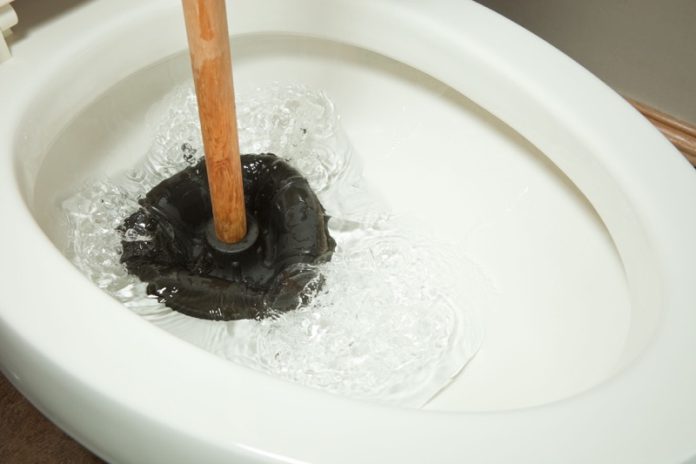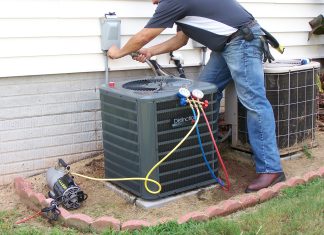Introduction
Dealing with a clogged toilet can be both frustrating and inconvenient. However, rather than resorting to panic or immediately seeking professional help, numerous easy and effective methods are available that you can try to unclog your toilet bowl. In this article, we will explore simple yet effective techniques that require minimal tools and can be done with household items. Let us examine the solutions that can efficiently restore your toilet to proper working condition.
- Boiling Water Method Employing boiling water is one of the simplest and most effective techniques for unclogging a toilet. Start by heating a pot of water to near boiling point (do not use boiling water directly to avoid cracking the porcelain). Afterward, with caution, pour the hot water into the toilet bowl from waist height, being mindful not to spill any. The water’s pressure and elevated temperature should aid in breaking down the clog, enabling it to flush away smoothly.
- Baking Soda and Vinegar Baking soda and vinegar are potent natural cleaning agents that can effectively unclog a toilet. Add one cup of baking soda to the toilet bowl, then pour two cups of vinegar. Allow the mixture to sit for about 30 minutes; you should notice some fizzing as the ingredients react. Subsequently, flush the toilet to determine if the clog has been resolved.
- Dish Soap Hack If baking soda and vinegar are unavailable, you can opt for dish soap instead. Apply a substantial amount of dish soap into the toilet bowl, allowing it to sit for about 20-30 minutes. The soap’s lubricating properties often aid in breaking up the clog, facilitating easier flushing. After the wait time, try flushing the toilet, and the clog should clear.
- Wire Coat Hanger A wire coat hanger can be handy when dealing with a stubborn toilet clog. Unravel the hanger and create a hook on one end. Carefully place the hooked end into the toilet drain and gently manipulate it to dislodge the blockage. Be cautious not to scratch the porcelain, and once you feel the clog giving way, flush the toilet to remove it entirely.
- Wet/Dry Vacuum A wet/dry vacuum can be utilized to eliminate the clog effectively. Ensure the vacuum is set to the “wet” mode, as you don’t want to blow air into the bowl. Position the vacuum hose firmly into the toilet drain, ensuring a tight seal around it. Activate the vacuum and let it draw out the clog. This approach proves especially effective for dealing with larger clogs.
- Epsom Salt Soak Epsom salt can be an effective and safe alternative to chemical drain cleaners. Pour approximately a cup of Epsom salt into the toilet bowl and allow it to sit for several hours or overnight. The salt will draw water into the bowel, potentially loosening the clog. Follow up with a few flushes to see if the clog has cleared.
- Toilet Auger or Plumbing Snake A toilet drill, commonly called a plumbing snake, is a specially designed-tool meant to disintegrate and eliminate toilet clogs. Insert the drill’s flexible end into the toilet drain and crank the handle to extend the cable further down the pipe. When you encounter resistance, rotate the drill to break up the clog. With some gentle maneuvering, you should be able to dislodge the obstruction and flush it away. Always remember to wear gloves and clean the drill thoroughly after use.
- Hot Water and Epsom Salt Combo Combining hot water and Epsom salt can create a potent solution for stubborn clogs. Start the process by adding a cup of Epsom salt to the toilet bowl, allowing it to sit for approximately 15 minutes. Afterward, carefully pour a pot of hot (not boiling) water into the bowl. Combining Epsom salt and hot water should help break down the clog, making it easier to flush away. Repeat the process if necessary. With these additional methods in your arsenal, you have various options to tackle different levels of clogging in your toilet bowl. Remember that if the clog appears significant or continues to persist despite your attempts, it is recommended to seek professional assistance. Doing so will help prevent any potential damage to your plumbing system.
Conclusion
Clearing a toilet clog does not need to be a daunting and tense undertaking. By employing these easy and practical methods, you can often resolve the issue without immediately needing to call a plumber or use a plunger. However, it is essential to exercise caution when trying any of these techniques, as improper handling may lead to further complications. If the clog persists or worsens despite your endeavours, it is essential to promptly seek professional assistance to prevent further aggravation of the problem. A licensed plumber possesses the expertise and specialized tools to diagnose the root cause of the clog and address it effectively, ensuring a long-lasting solution. Moreover, they can provide valuable advice on preventive maintenance, such as using less toilet paper and refraining from flushing non-flushable items, to reduce the likelihood of future clogs. Remember, taking proactive measures and being mindful of what you flush can go a long way in keeping your bathroom running smoothly and your toilet free from clogs.
















